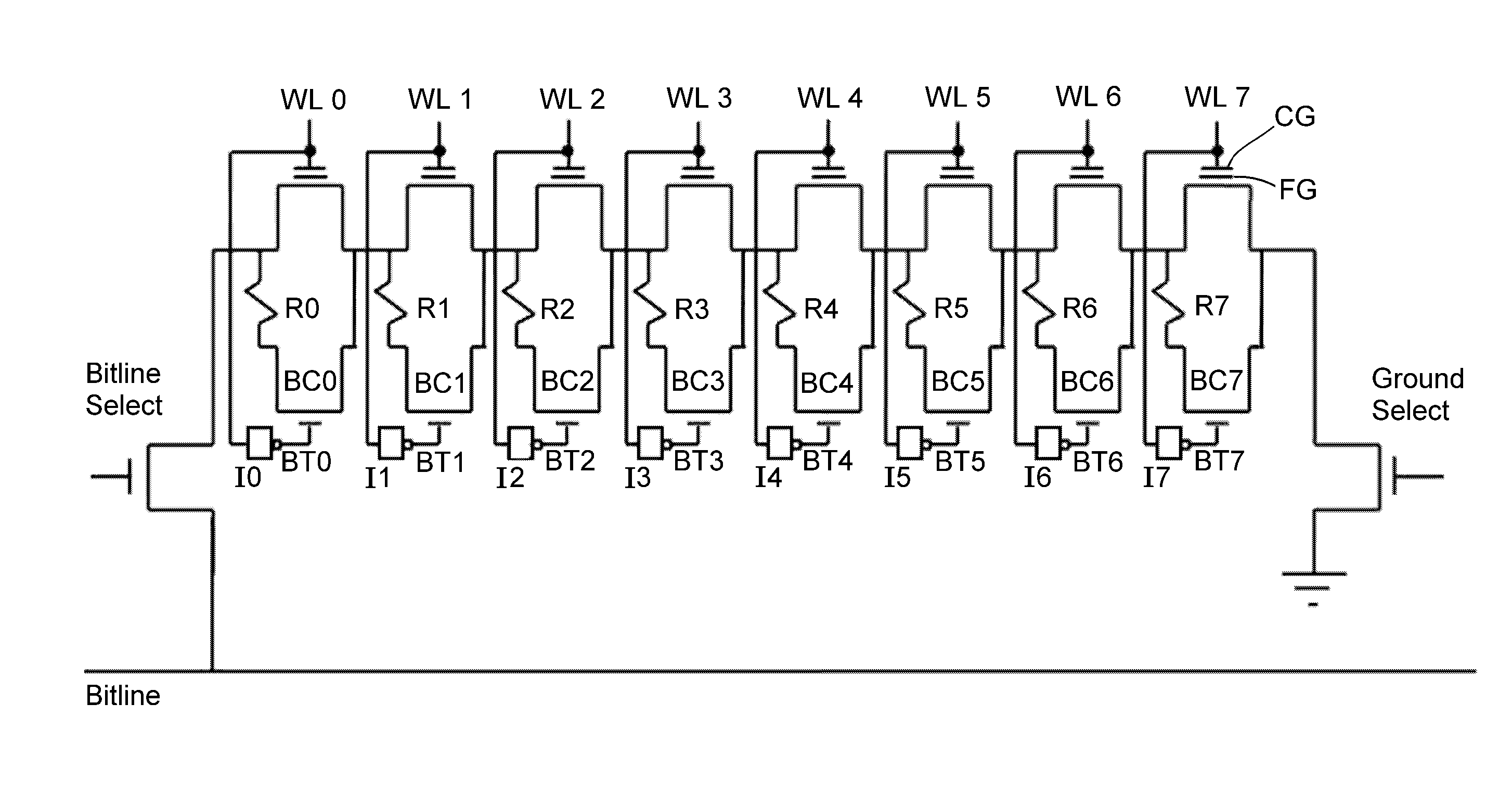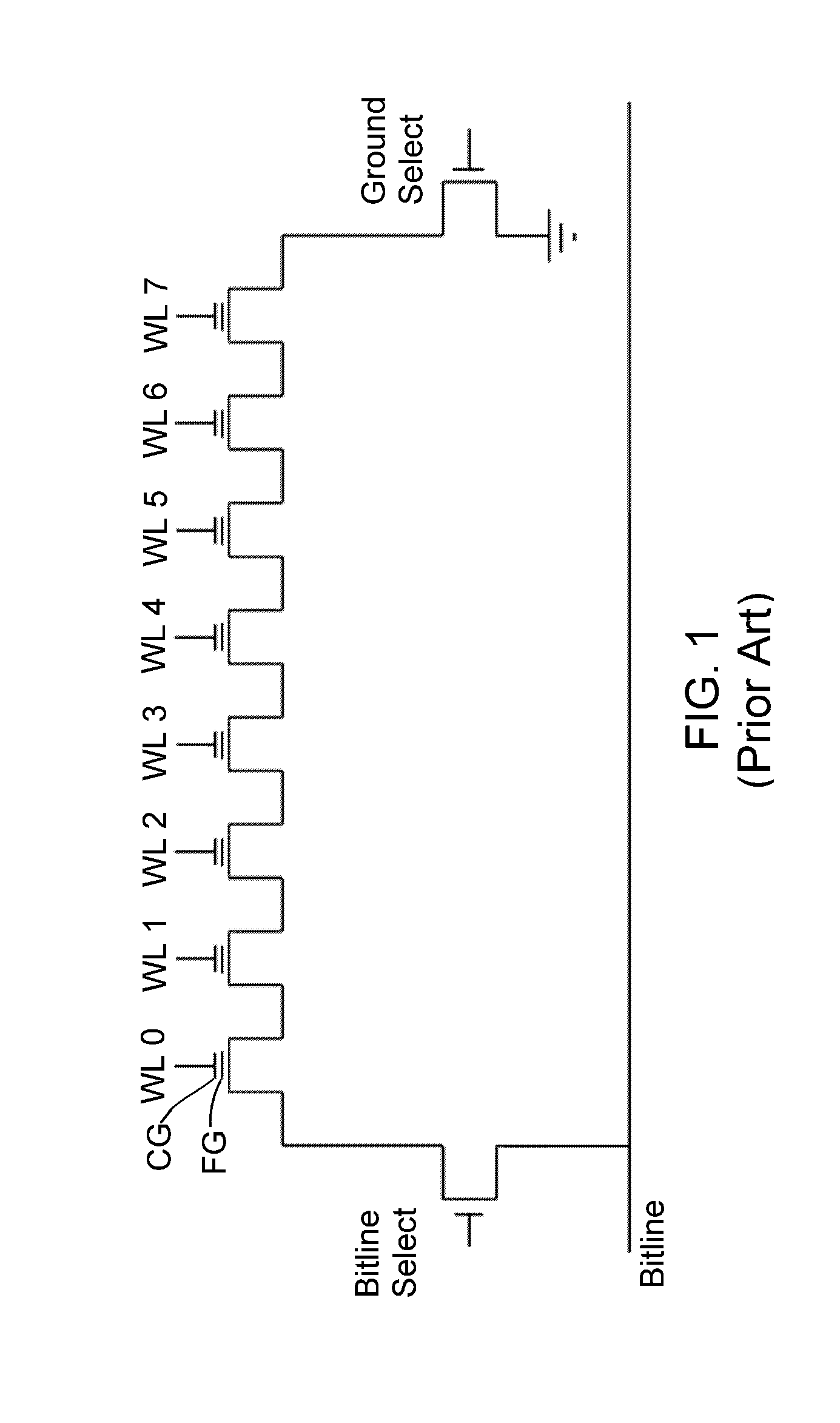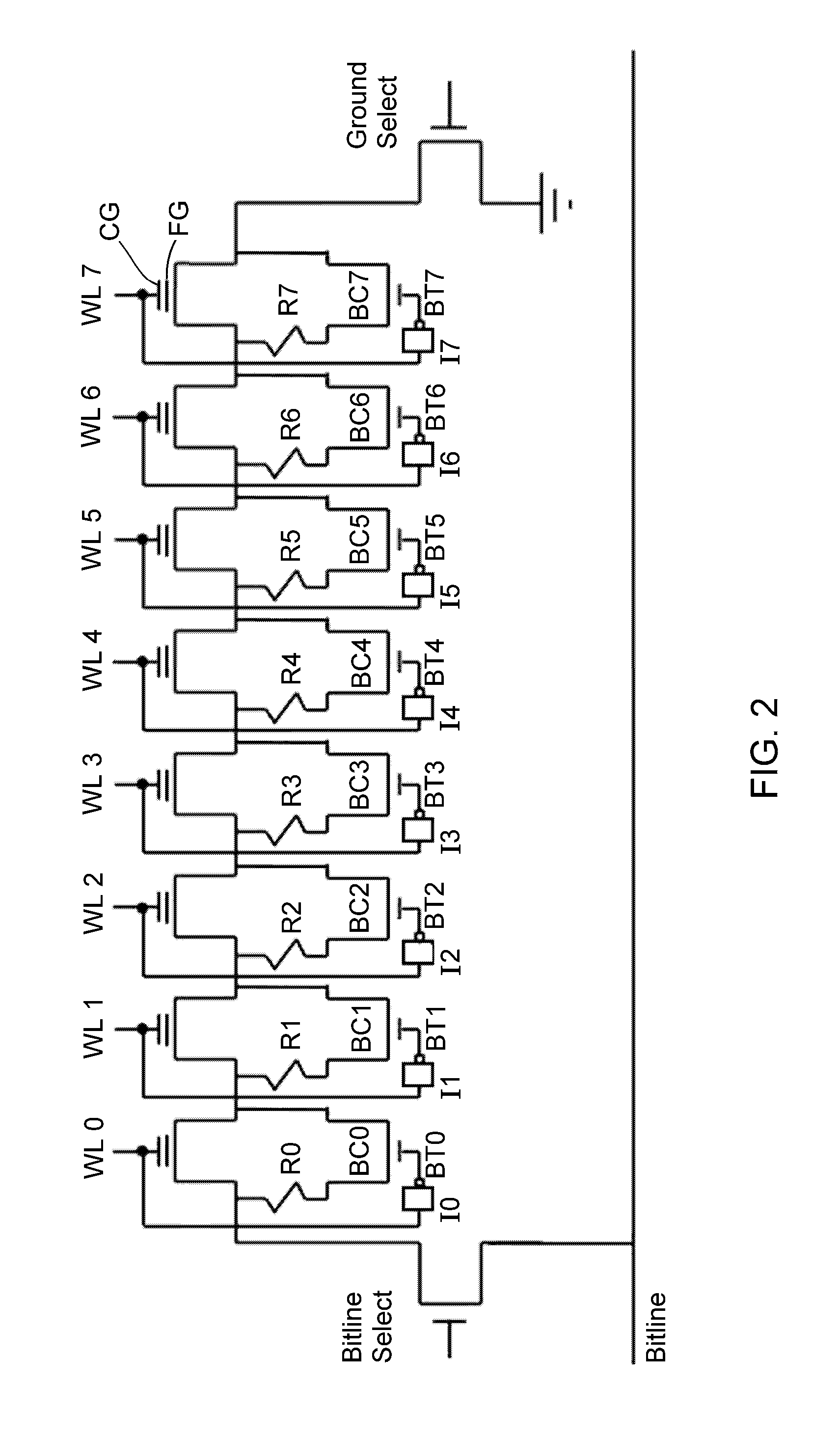Flash memory device and method of operation
a flash memory and memory cell technology, applied in static storage, digital storage, instruments, etc., can solve the problems of catastrophic data corruption, global erase of all cells in one block, and its entire block being marked as “bad” and other problems, to achieve the effect of reducing the erase voltage, avoiding over-erasing of floating gates, and reducing the overall stress on memory cells
- Summary
- Abstract
- Description
- Claims
- Application Information
AI Technical Summary
Benefits of technology
Problems solved by technology
Method used
Image
Examples
Embodiment Construction
[0016]The present invention is generally applicable to computers and other processing apparatuses that utilize or are capable of using nonvolatile (permanent) memory-based mass storage devices, and more particularly to solid-state drives (SSDs) that make use of NAND flash memory devices.
[0017]As discussed above, a conventional NAND flash memory device is erased by subjecting an entire block (containing pages of memory cells) to an erase voltage, typically 20V. As was discussed in reference to FIG. 1, the erase voltage is applied to all serial chains of gates forming a block after the chain a serial chain of gates forming a page after the page has been selected using a “Bitline Select” transistor to apply the erase voltage to the Bitline. All cells within the block are treated equally and subjected to the same Fowler-Nordheim field, regardless of the existing level of charge distribution in the floating gates of the individual cells. Depending on the particular design of the NAND fla...
PUM
 Login to View More
Login to View More Abstract
Description
Claims
Application Information
 Login to View More
Login to View More - R&D
- Intellectual Property
- Life Sciences
- Materials
- Tech Scout
- Unparalleled Data Quality
- Higher Quality Content
- 60% Fewer Hallucinations
Browse by: Latest US Patents, China's latest patents, Technical Efficacy Thesaurus, Application Domain, Technology Topic, Popular Technical Reports.
© 2025 PatSnap. All rights reserved.Legal|Privacy policy|Modern Slavery Act Transparency Statement|Sitemap|About US| Contact US: help@patsnap.com



